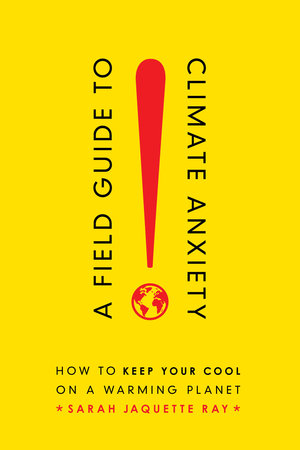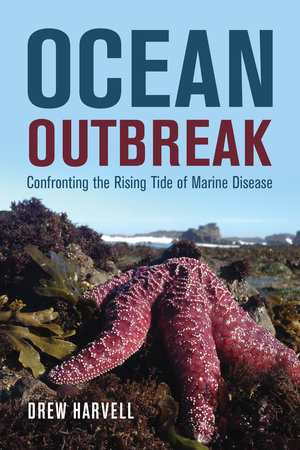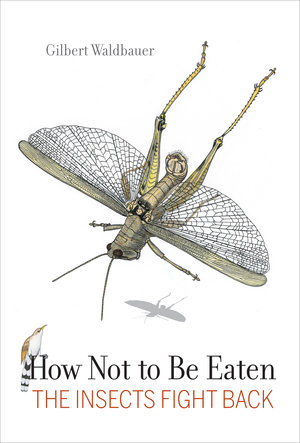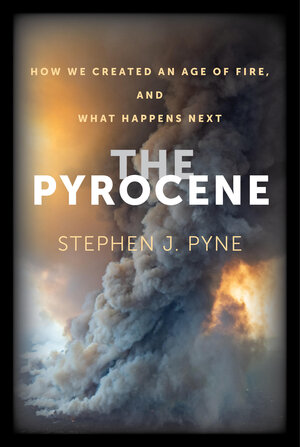The environment is facing unprecedented challenges. Climate change and increased pollution are disrupting access to natural resources, such as clean water and air, and leading to rapid biodiversity loss. It is easy to feel overwhelmed by the intractable scale of these issues, which is why there is an urgent need for books that can offer solutions to the climate crisis. We’re highlighting just a handful of UC Press books that can reinvigorate how we think about the planet and what we can do to preserve it, and please be sure to explore more of our Environmental Studies books.
The Big Picture
A Field Guide to Climate Anxiety
How to Keep Your Cool on a Warming Planet
by Sarah Jaquette Ray
Drawing on a decade of experience leading and teaching in college environmental studies programs, Sarah Jaquette Ray has created an “existential tool kit” for the climate generation. Combining insights from psychology, sociology, social movements, mindfulness, and the environmental humanities, Ray explains why and how we need to let go of eco-guilt, resist burnout, and cultivate resilience while advocating for climate justice. A Field Guide to Climate Anxiety is the essential guidebook for the climate generation—and perhaps the rest of us—as we confront the greatest environmental threat of our time.
The Birth of the Anthropocene
by Jeremy Davies
The world faces an environmental crisis unprecedented in human history. Carbon dioxide levels have reached heights not seen for three million years, and the greatest mass extinction since the time of the dinosaurs appears to be underway. Such far-reaching changes suggest something remarkable: the beginning of a new geological epoch. It has been called the Anthropocene. The Birth of the Anthropocene shows how this epochal transformation puts the deep history of the planet at the heart of contemporary environmental politics. By opening a window onto geological time, the idea of the Anthropocene changes our understanding of present-day environmental destruction and injustice. Linking new developments in earth science to the insights of world historians, Jeremy Davies shows that as the Anthropocene epoch begins, politics and geology have become inextricably entwined.
The Ocean

The Lure of the Beach
A Global History
by Robert C. Ritchie
The Lure of the Beach is a chronicle of humanity’s history with the coast, taking us from the seaside pleasure palaces of Roman elites and the aquatic rituals of medieval pilgrims, to the venues of modern resort towns and beyond. Robert C. Ritchie traces the contours of the material and social economies of the beach throughout time, covering changes in the social status of beach goers, the technology of transport, and the development of fashion (from nudity to Victorianism and back again), as well as the geographic spread of modern beach-going from England to France, across the Mediterranean, and from nineteenth-century America to the world. And as climate change and rising sea levels erode the familiar faces of our coasts, we are poised for a contemporary reckoning with our relationship—and responsibilities—to our beaches and their ecosystems.
Ocean Outbreak
Confronting the Rising Tide of Marine Disease
by Drew Harvell
Ocean Outbreak follows renowned scientist Drew Harvell and her colleagues into the field as they investigate how four iconic marine animals—corals, abalone, salmon, and starfish—have been devastated by disease. Based on over twenty years of research, this firsthand account of the sometimes gradual, sometimes exploding impact of disease on our ocean’s biodiversity ends with solutions and a call to action. Only through policy changes and the implementation of innovative solutions from nature can we reduce major outbreaks, save some ocean ecosystems, and protect our fragile environment.
Bug Life
How Not to Be Eaten
The Insects Fight Back
by Gilbert Waldbauer and illustrated by James Nardi
From masterful disguises to physical and chemical lures and traps, predatory insects have devised ingenious and bizarre methods of finding food. Equally ingenious are the means of hiding, mimicry, escape, and defense waged by prospective prey in order to stay alive. This absorbing book demonstrates that the relationship between the eaten and the eater is a central—perhaps the central—aspect of what goes on in the community of organisms. By explaining the many ways in which insects avoid becoming a meal for a predator, and the ways in which predators evade their defensive strategies, Gilbert Waldbauer conveys an essential understanding of the unrelenting coevolutionary forces at work in the world around us.
Field Guide to California Insects
Second Edition
by Kip Will, Joyce Gross, Daniel Rubinoff, and Jerry A. Powell
Completely revised for the first time in over 40 years, Field Guide to California Insects now includes over 600 insect species, each beautifully illustrated with color photographs. Engaging accounts focus on distinguishing features, remarkable aspects of biology, and geographical distribution in the state. An accessible and compact introduction to identifying, understanding, and appreciating these often unfamiliar and fascinating creatures, this guide covers insects that readers are likely to encounter in homes and natural areas, cities and suburbs, rural lands and wilderness. It also addresses exotic and invasive species and their impact on native plants and animals. Field Guide to California Insects remains the definitive portable reference and a captivating read for beginners as well as avid naturalists.
Forthcoming Fire Titles
The Pyrocene
How We Created an Age of Fire, and What Happens Next
by Stephen J. Pyne
The Pyrocene tells the story of what happened when a fire-wielding species, humanity, met an especially fire-receptive time in Earth’s history. Since terrestrial life first appeared, flames have flourished. Over the past two million years, however, one genus gained the ability to manipulate fire, swiftly remaking both itself and eventually the world. We developed small guts and big heads by cooking food; we climbed the food chain by cooking landscapes; and now we have become a geologic force by cooking the planet.
Introduction to Fire in California
Second Edition
by David Carle
What is fire? How are wildfires ignited? How do California’s weather and topography influence fire? How did Indigenous people use fire on the land we now call California? David Carle’s second edition of Introduction to Fire in California brings the wildfire story up to the year 2020, with information about recent extreme and deadly fire events and the evidence that climate change is swiftly changing the wildfire story in California. This update reflects current debates about California’s future as a climate-crisis leader facing massive, annual natural disasters; the future of California development and housing; and the critically necessary alternatives to traditional energy options.






